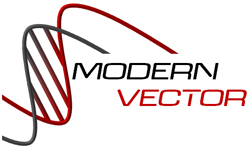Modern Vector's Origin Story
Every Superhero needs an origin story, something that explains their motivation and gets us to root for them as they tackle the challenges of the world.
Well a Super Vector needs an origin story too.
It all started innocently enough...
My background is cell biology and I have spent several decades working with vectors. Usually, I will admit, I didn’t give the vector construction much thought. Did I have the right promoter for the host I was going to work with? Did I have the restriction sites I wanted to use? Basic questions like that. As long as I could insert my construct and get it sequenced, I was satisfied, ready to move on to the next step and express my protein. But sometimes didn’t work.
One of the cDNAs I was working with was more than 6kb. The vectors got huge and increasingly unstable and with the additional sequence for the homology arms, well, it became murderously difficult to make progress. Things had to change.
Instead of getting frustrated, I sat down and designed a new vector from scratch. It needed only the features essential to protein expression and cellular biology. The goal: Make a vector as sleek and efficient as possible, using only the sequence that was necessary. It took dozens of variations and refits to finally create a true Modern Vector:
- Small – Maximizing payload capacity
- Efficient – Eliminating unneeded sequence that might be carried over into genomic editing experiments
- Versatile – One vector could be used in a variety of hosts
- Powerful – able to express any cDNA to extremely high levels
Every feature was tested to ensure that it “brought something to the table”. Improvements were kept, modifications were made, and sequence was reduced or eliminated.
I knew it was ready to go when the protein expression showed such promise:


From a relatively simple cytosolic protein, to the multi-domain monstrosity that I had struggled with, the Modern Vector was simply easier to use and more powerful than the legacy vectors. It was ready for others, it was ready to make molecular biology easier for everyone.
I welcome you to give it a try, you won't want to use anything else.
Dr. David Kiewlich

